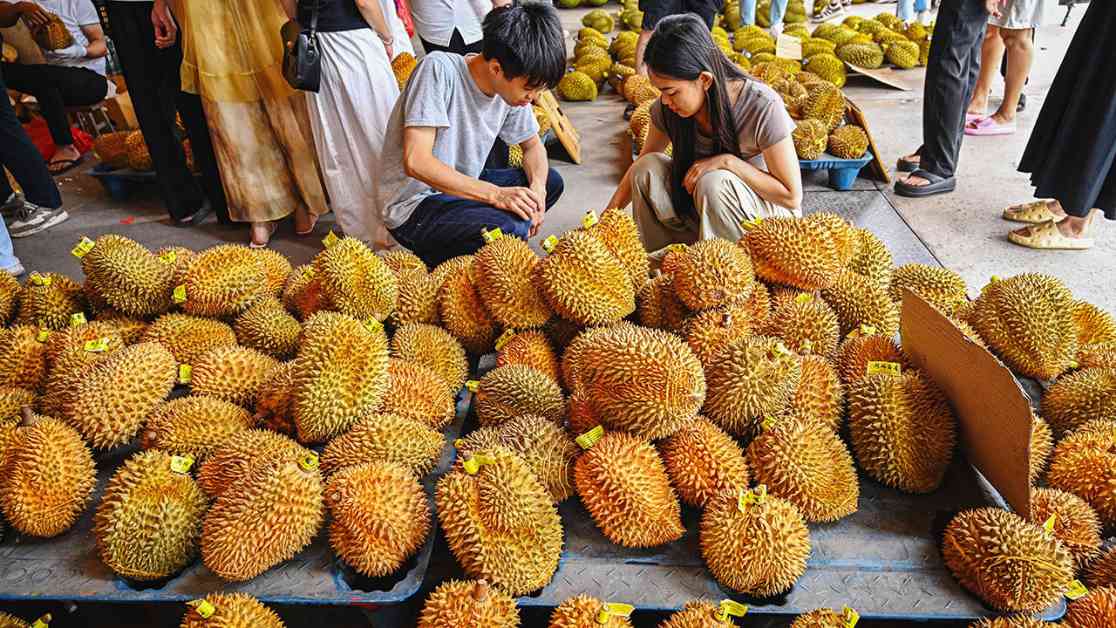Eric Chan, a durian seller from Malaysia, has been catering to the South-East Asian market for a long time. However, he now has his sights set on a bigger opportunity – the Chinese market. The Musang King variety of durians that he grows is highly popular among Chinese consumers. Unfortunately, Malaysia currently only has approval to export frozen durians to China, while the demand is for fresh ones.
Chinese consumers have developed a strong fondness for durians, with imports of fresh durians reaching $6.7 billion in value last year. This marked a significant increase from $4 billion in 2022 and $1.6 billion in 2019 when durians surpassed cherries as China’s top fresh fruit import in terms of value.
The Chinese government seems to be taking note of this trend and viewing it as an economic opportunity. As Eric Chan and other durian producers in Malaysia seek to tap into the Chinese market, there is potential for diplomatic and trade relations to be strengthened between the two countries.
In addition to durians, there are other noteworthy articles in the China section of the newspaper. Stories range from China’s efforts to mend relations with Australia to foreign judges expressing discontent with Hong Kong’s political environment. The article on China’s craze for durians highlights the evolving consumer preferences and trade dynamics in the region.
The increasing demand for durians in China not only presents a lucrative opportunity for durian producers in countries like Malaysia but also reflects a larger trend of Chinese consumers developing a taste for exotic and high-quality fruits. As the Chinese market continues to grow and evolve, it will be interesting to see how durian producers and exporters adapt to meet the demand for fresh durians.
Overall, the rise of China’s obsession with durians is not only a testament to changing consumer preferences but also a potential driver for economic growth and diplomatic relations in the region. It will be fascinating to observe how this trend unfolds in the coming years and the impact it has on the global fruit trade market.


























